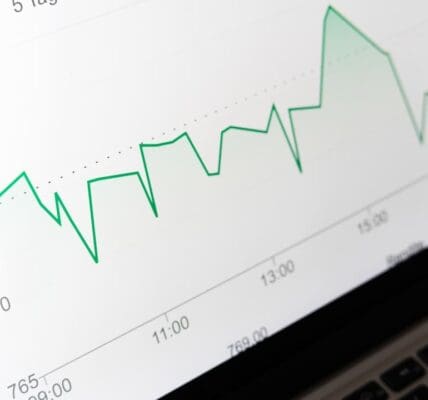A/B testing, also known as split testing, is a method of comparing two versions of a webpage or app against each other to determine which one performs better. This testing method is crucial for optimizing your Shopify store as it allows you to make data-driven decisions about changes to your website, ultimately leading to improved user experience and increased sales. By testing different elements such as product pages, checkout processes, and call-to-action buttons, you can gain valuable insights into what resonates best with your target audience and drives the most conversions.
A/B testing is essential for improving digital marketing efforts and e-commerce sales because it provides concrete evidence of what works and what doesn’t. Instead of relying on guesswork or assumptions, A/B testing allows you to make informed decisions based on real user data. This can lead to more effective marketing strategies, higher conversion rates, and ultimately, increased revenue for your Shopify store. By continuously testing and optimizing different elements of your website, you can stay ahead of the competition and ensure that your store is always performing at its best.
Key Takeaways
- A/B testing is a crucial concept for optimizing Shopify stores and improving digital marketing efforts and e-commerce sales.
- Choosing the right A/B testing tools and identifying key areas for testing is essential for setting up effective A/B tests for your Shopify store.
- Interpreting A/B test data and understanding the impact of variations on digital marketing metrics is important for analyzing A/B test results.
- A/B testing can be used to optimize product pages, enhance the checkout process, and improve call-to-action buttons and messaging for driving sales and conversions.
- Implementing ongoing A/B testing strategies is necessary to adapt to changing digital marketing trends and e-commerce consumer behavior for maintaining and improving Shopify store performance.
Setting Up A/B Tests for Your Shopify Store
When setting up A/B tests for your Shopify store, it’s important to choose the right A/B testing tools that align with your specific needs and goals. There are various tools available that offer different features such as heatmaps, session recordings, and user feedback, which can provide valuable insights into user behavior and preferences. Additionally, it’s crucial to identify key areas for testing, such as product pages, checkout processes, and call-to-action buttons, as these are critical touchpoints that can significantly impact user experience and conversion rates.
Implementing A/B tests effectively for maximum impact on marketing and E-Commerce performance involves careful planning and execution. It’s essential to create clear hypotheses for each test and ensure that you have a large enough sample size to draw statistically significant conclusions. By carefully monitoring the results of your A/B tests and making data-driven decisions, you can make meaningful improvements to your Shopify store that directly impact sales and marketing outcomes.
Analyzing A/B Test Results
Analyzing A/B test results is a crucial step in the A/B testing process as it allows you to make informed decisions about which variations perform best and how to optimize your marketing and e-commerce strategies accordingly. Interpreting A/B test data involves looking at key metrics such as conversion rates, click-through rates, and bounce rates to understand the impact of different variations on user behavior. By understanding how these variations affect user actions, you can make strategic changes to improve the overall performance of your Shopify store.
Using A/B test results to optimize e-commerce sales and marketing strategies involves leveraging the insights gained from the tests to make data-driven decisions. For example, if a certain product page layout leads to a higher conversion rate, you can apply this knowledge to other product pages to drive more sales. Similarly, if a specific call-to-action button design results in increased user engagement, you can implement this across your website to improve overall conversion rates. By continuously analyzing A/B test results and applying the insights gained, you can refine your marketing strategies and enhance the performance of your Shopify store.
Optimizing Product Pages with A/B Testing
| Metrics | Control Group | Variant Group | Improvement |
|---|---|---|---|
| Conversion Rate | 25% | 28% | 3% |
| Average Session Duration | 3 minutes | 3.5 minutes | 0.5 minutes |
| Bounce Rate | 40% | 35% | 5% |
A/B testing different product page layouts, images, and descriptions is essential for optimizing the user experience and driving sales on your Shopify store. By testing variations of these elements, you can determine which combination resonates best with your target audience and leads to higher conversion rates. For example, testing different product images can help you understand which visuals are most appealing to users and drive more purchases. Similarly, testing different product page layouts can provide insights into how users navigate and interact with your website, allowing you to make informed decisions about design and functionality.
Using A/B testing to determine the most effective product page elements for driving sales and conversions involves carefully analyzing the results of each test to identify patterns and trends. By understanding which elements lead to higher conversion rates, you can optimize your product pages to maximize sales and improve the overall performance of your Shopify store. Leveraging A/B test results to improve digital marketing efforts involves applying the insights gained from product page tests to refine your marketing strategies and drive more traffic to high-converting product pages.
Enhancing the Checkout Process with A/B Testing
The checkout process is a critical stage in the customer journey, and optimizing it with A/B testing can have a significant impact on e-commerce sales and marketing outcomes. By testing different checkout page designs and functionalities, you can identify barriers to completing the purchase process and make strategic changes to improve conversion rates. For example, testing different payment options or shipping methods can help you understand which options are most appealing to users and lead to higher completion rates.
Using A/B testing to optimize the checkout process based on test results involves making data-driven decisions about design, functionality, and user experience. By understanding how different variations impact user behavior, you can make strategic changes to streamline the checkout process and reduce friction points that may be hindering conversions. Applying A/B test insights to enhance digital marketing efforts involves leveraging the optimized checkout process to drive more sales and improve overall marketing outcomes.
A/B Testing Call-to-Action Buttons and Messaging

A/B testing different call-to-action button designs, colors, and placements is crucial for driving user engagement and conversions on your Shopify store. By testing variations of these elements, you can gain valuable insights into which combinations lead to higher click-through rates and ultimately drive more sales. For example, testing different button colors or placements can help you understand which variations are most noticeable to users and lead to increased engagement.
Using A/B testing to determine the most effective messaging for driving user engagement and conversions involves carefully analyzing the results of each test to understand how different messaging impacts user behavior. By understanding which messaging resonates best with your target audience, you can make strategic changes to optimize your call-to-action buttons and drive more conversions. Applying A/B test insights to enhance digital marketing efforts involves leveraging the optimized call-to-action buttons and messaging to improve overall marketing outcomes and drive more traffic to high-converting pages.
Implementing Ongoing A/B Testing Strategies
Developing a continuous A/B testing strategy for your Shopify store is essential for staying ahead of the competition and adapting to changing digital marketing trends and e-commerce consumer behavior. By continuously testing different elements of your website, you can ensure that your store is always performing at its best and driving maximum sales. Leveraging A/B testing to adapt to changing digital marketing trends involves staying informed about industry best practices and continuously testing new ideas and strategies to stay ahead of the curve.
Using ongoing A/B testing to maintain and improve the performance of your Shopify store in the dynamic e-commerce landscape involves making data-driven decisions about design, functionality, and user experience based on test results. By continuously analyzing A/B test data and applying the insights gained, you can make strategic changes that directly impact sales and marketing outcomes. Ultimately, implementing ongoing A/B testing strategies allows you to continuously optimize your Shopify store for maximum performance in the ever-evolving e-commerce landscape.
FAQs
What is A/B testing in the context of Shopify?
A/B testing, also known as split testing, is a method of comparing two versions of a webpage or app against each other to determine which one performs better. In the context of Shopify, A/B testing is used to optimize the design, content, and functionality of an online store to improve conversion rates and overall performance.
How does A/B testing work on Shopify?
A/B testing on Shopify involves creating two different versions of a webpage or element within the store, such as a product page, checkout process, or call-to-action button. Visitors to the store are then randomly shown one of the two versions, and their behavior and interactions are tracked to determine which version performs better in terms of conversions, sales, or other key metrics.
What can be A/B tested on Shopify?
On Shopify, almost every aspect of an online store can be A/B tested, including product descriptions, pricing, images, layout, navigation, forms, and promotional offers. Additionally, A/B testing can be used to compare different marketing strategies, such as email campaigns, ad creatives, and landing pages.
What are the benefits of A/B testing on Shopify?
A/B testing on Shopify allows store owners to make data-driven decisions to improve the performance of their online store. By testing different elements and strategies, store owners can identify what resonates best with their audience and ultimately increase conversions, sales, and customer satisfaction.
Are there any tools or apps available for A/B testing on Shopify?
Yes, there are several third-party tools and apps available for A/B testing on Shopify, such as Optimizely, VWO, and Google Optimize. These tools provide easy-to-use interfaces for creating and running A/B tests, as well as analyzing the results to make informed decisions for store optimization.












